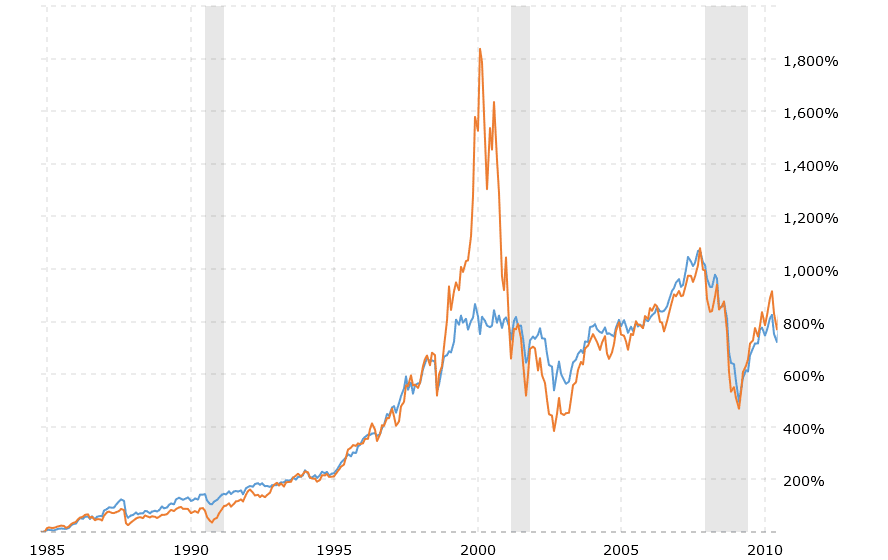5 Theories About What Happened to Baby Jessica’s Trust Fund
If you’re old enough, you might recall the widely publicized 1987 incident when an 18-month-old toddler named Jessica fell into an 8-inch-wide well in Texas. For 58 hours, the world followed closely as rescuers worked to dig a parallel shaft in a race against time.
Dubbed “Baby Jessica,” her story captured global attention—even in the era before social media. In response, many individuals donated money to support her future. Those funds were placed into a trust that she would gain access to at age 25—sometime around 2010 or 2011.
The total amount held in trust was reportedly $1.2 million.
What happened to that money? And how did the trust perform over time? The outcome serves as a reminder to high-net-worth individuals and families that having millions in a fund doesn’t automatically ensure long-term financial security.
According to reports, most of the $1.2 million was lost during the 2008 financial crisis, before Jessica had any access to it. The remaining amount was used in part to help her family purchase a home.
Unlike the more familiar cautionary tales involving overspending or mismanagement, this case reflects something different: significant financial loss occurred before the beneficiary even saw the funds. It highlights a broader point—investment performance, timing, and risk exposure matter, even when the original intent is long-term preservation.
What Happened to the $1.2 Million Trust Fund?
The $1.2 million placed in a trust fund for Baby Jessica was intended to support her future once she reached adulthood. But what might have happened to that money in the two decades before she could access it?
Looking at market conditions during that time offers some insight:
Following Jessica’s rescue, Black Monday occurred just five days later in October 1987. Despite that immediate downturn, the fund likely saw growth through the late 1980s. The 1991 recession may have caused a temporary decline, followed by strong gains during the economic expansion of the 1990s, until the dot-com crash around 2000.
Then came a period of modest growth, culminating in the 2008 financial crisis, which significantly impacted markets across sectors. By the time Jessica could access the trust in 2010 or 2011, some recovery had likely occurred, though the exact amount is difficult to determine without direct data.
Consider the following chart showing the performance of the DOW (blue) and NASDAQ (orange) from 1985 to 2010:

Source: Macrotrends.net
You’ll notice the steep drop during Black Monday between 1985 and 1990, around the time the trust was likely established. Despite multiple market downturns, the broader trend was upward—even at the lowest points of the Great Recession in 2008, market levels remained significantly higher than they were in 1987.
So, how did the fund reportedly lose such a large portion of its value?
While we don’t have access to the actual investment records, one possible explanation is that the funds were not managed with long-term growth and risk management in mind. The outcomes suggest a potential lack of diversification, oversight, or alignment with evolving market conditions.
How Might Jessica’s Trust Fund Have Been Mismanaged?
There are a few possibilities that could explain why the value of Jessica’s $1.2 million trust fund was significantly diminished by the time she accessed it. These are common issues that can affect long-term investment outcomes, especially when portfolios lack diversification or appropriate risk management.
Concentration Risk
One potential issue could have been overexposure to specific sectors or indices. For example, if the trust was heavily allocated to an index fund that tracked the NASDAQ, it may have experienced high volatility. Gains made during the tech boom in the late 1990s could have been largely erased by the dot-com crash in the early 2000s and further diminished during the 2008 financial crisis.
Without proper asset allocation or periodic rebalancing, portfolios can suffer during market downturns and miss recovery opportunities in growth periods. Concentration risk may have limited the fund’s ability to preserve and grow capital consistently over time.
High-Risk Portfolio
Another possibility is that the trust was managed with a high-risk investment strategy. While such portfolios may perform well during periods of economic expansion, like the 1990s, they are more vulnerable during recessions and prolonged downturns.
A sound retirement financial planning strategy for long-term funds, including those meant for future use by a minor or high-net-worth individual, should balance growth with risk tolerance and time horizon. Overexposure to equities without diversification into lower-risk assets may lead to volatility that undermines financial goals.
Poorly diversified or aggressive investment plans can reduce the long-term effectiveness of a portfolio, particularly if left unmanaged through multiple market cycles. When planning for retirement or future financial needs, understanding how asset mix and risk exposure can affect outcomes is critical.
Neglect
Another possibility to consider is a lack of ongoing portfolio management. If an advisor sets an investment strategy once and then fails to revisit it over time, the portfolio may underperform, especially across multiple market cycles and changing economic conditions.
While it’s unclear whether this was the case with Jessica’s trust fund, it’s important to understand how neglect can impact long-term financial outcomes. Over a 20-year span, markets, industries, and global trends can shift dramatically.
For example, in 1987, the digital economy was virtually non-existent. By 2010, major transformations had taken place: the rise of the internet, e-commerce, streaming platforms, and entirely new industries. Companies that once dominated—like Sears and Kmart—were in decline, while new market leaders had emerged.
If an investment portfolio is not periodically reviewed and adjusted to reflect such significant shifts, its performance may lag behind or suffer avoidable losses, especially during economic downturns. This challenge becomes even more significant during recessions, when poorly managed or outdated portfolios may experience greater declines than diversified, actively managed ones.
In addition to market changes, investors themselves evolve over time. Financial goals, risk tolerance, family dynamics, and lifestyle needs can shift significantly over the course of decades. Without active monitoring and updates, a portfolio that once aligned with an investor’s situation may no longer support their long-term objectives.
This is why regular portfolio reviews and adjustments are considered essential components of sound retirement financial planning.
Lack of Engagement with the Client
Just as a portfolio can be neglected, so can the client.
In Jessica’s case, it’s worth questioning whether the trust fund managers maintained consistent communication with her or her parents during key developmental years. Were conversations happening as she approached adulthood, around the time major life decisions typically take shape?
By 2004, she would have been about 18 years old—an important point for discussions about college, career goals, or other financial planning needs. At this stage, understanding whether any portion of the trust might be needed for near-term expenses like tuition, housing, or debt would have been critical.
In some cases, trust structures allow for limited access to funds for educational purposes or other qualified uses before full disbursement. Without active engagement, those opportunities might not be identified or properly planned for.
Jessica later married and had children shortly after gaining access to the trust, suggesting that a portion of the funds may have been needed for home purchases, family support, or related short-term goals. Investments tied to those needs may have required a more conservative approach.
A lack of regular communication could result in portfolio decisions that no longer reflect the client’s evolving priorities. In any long-term financial relationship, especially one involving a trust fund, timely discussions are essential for adjusting the strategy as life circumstances change.
The Chair Was Empty
Another possibility is that the trust fund lacked active oversight altogether—that is, Jessica may not have had a financial advisor managing the fund at any point.
In such a scenario, the funds may have remained in a static portfolio or savings account for nearly two decades, without any ongoing adjustments, strategy updates, or performance reviews. Even if periodic statements were sent by the institution holding the assets, without a dedicated advisor or manager assigned to the account, the opportunity to optimize growth or manage risk may have been missed entirely.
Without guidance, it’s also possible that any questions or financial decisions Jessica had as she approached adulthood were addressed without professional input. The absence of a financial advisor over such a long period could have had lasting implications, not just for her, but also for her family. If the trust had been actively managed, its long-term performance might have better supported goals such as education funding, homeownership, or future retirement planning. Instead, the outcome highlights how crucial proactive, long-term financial planning can be, particularly for funds established to support life milestones and generational needs.
Why High Net Worth Investors Need Wealth Managers
This discussion has been a thought exercise based on a well-known public case. Jessica herself has shared that she’s content with her life and grateful for the support she received following such an extraordinary experience in her early years.
Still, there’s a broader takeaway for high-net-worth individuals and families.
Without ongoing, attentive, and strategic financial planning, even substantial portfolios can underperform, particularly during periods of market volatility or economic downturns. The absence of proactive oversight may result in missed opportunities for growth, increased exposure to risk, and a disconnect between your wealth and your evolving life goals.
In contrast, effective wealth management involves more than just investing—it’s about long-term planning, adapting to change, and aligning financial strategies with your personal and family priorities.
If you’re beginning to think more seriously about preserving your wealth, planning for retirement, or navigating life transitions, there are tools and resources available to support you.
